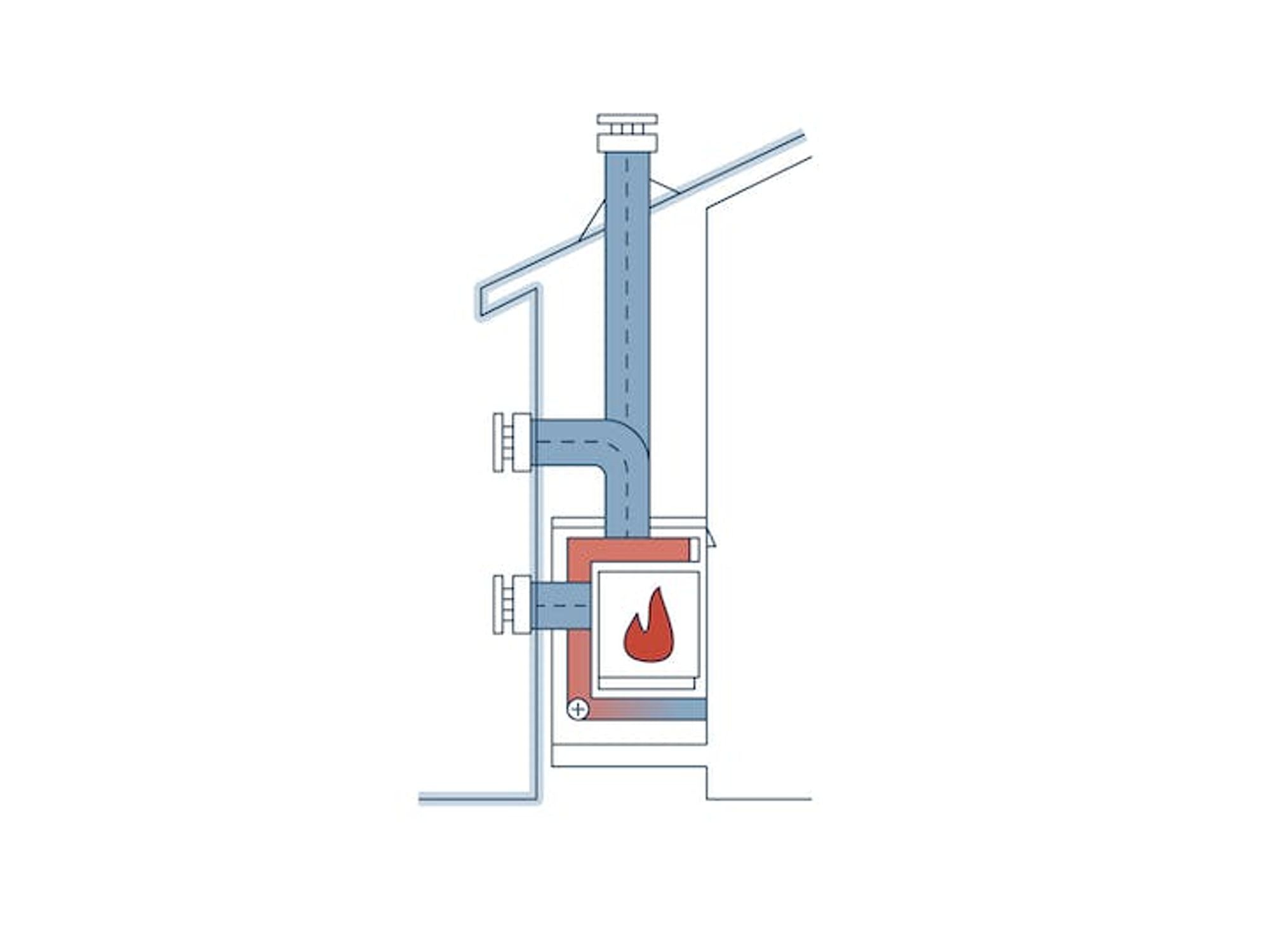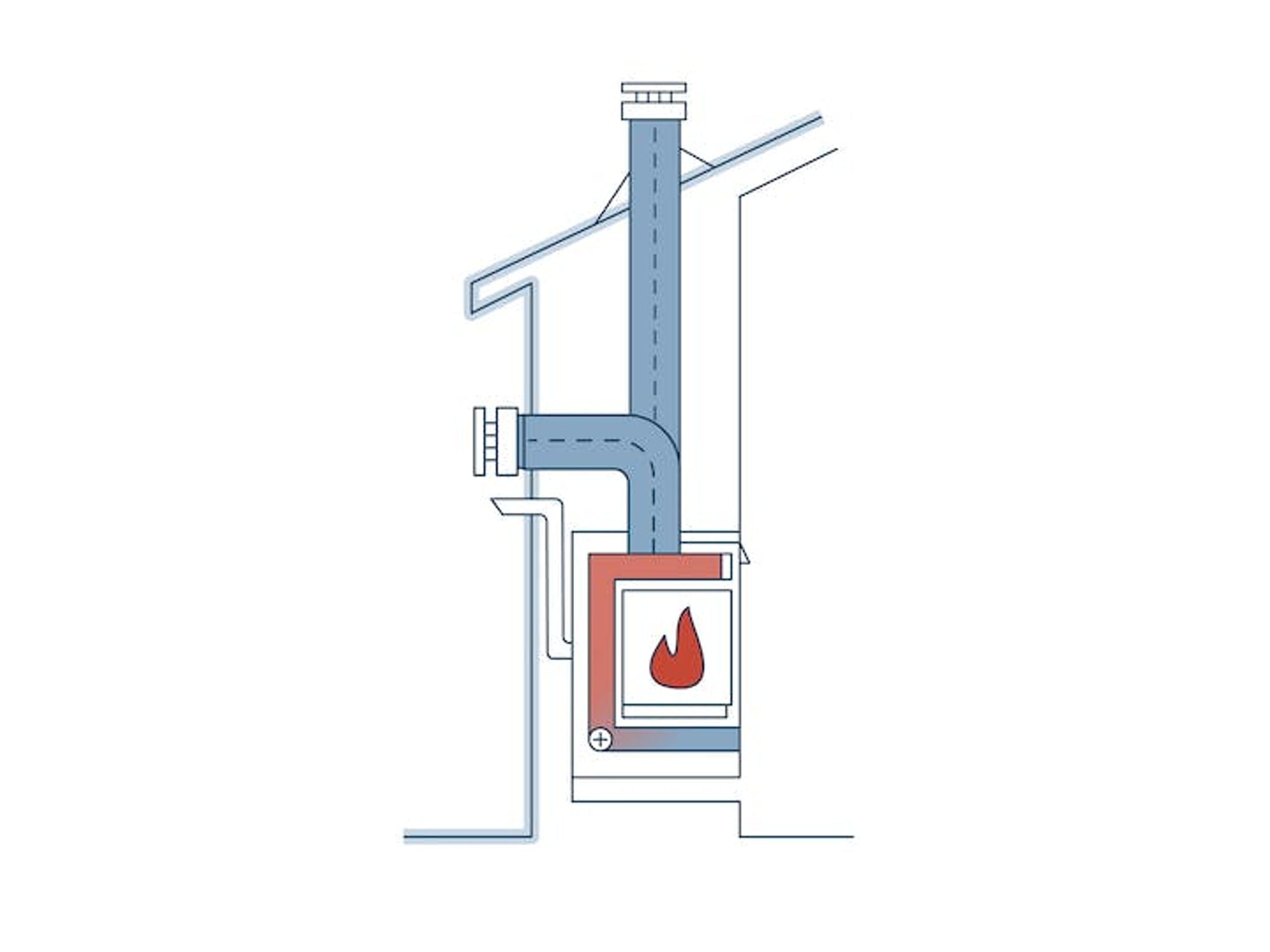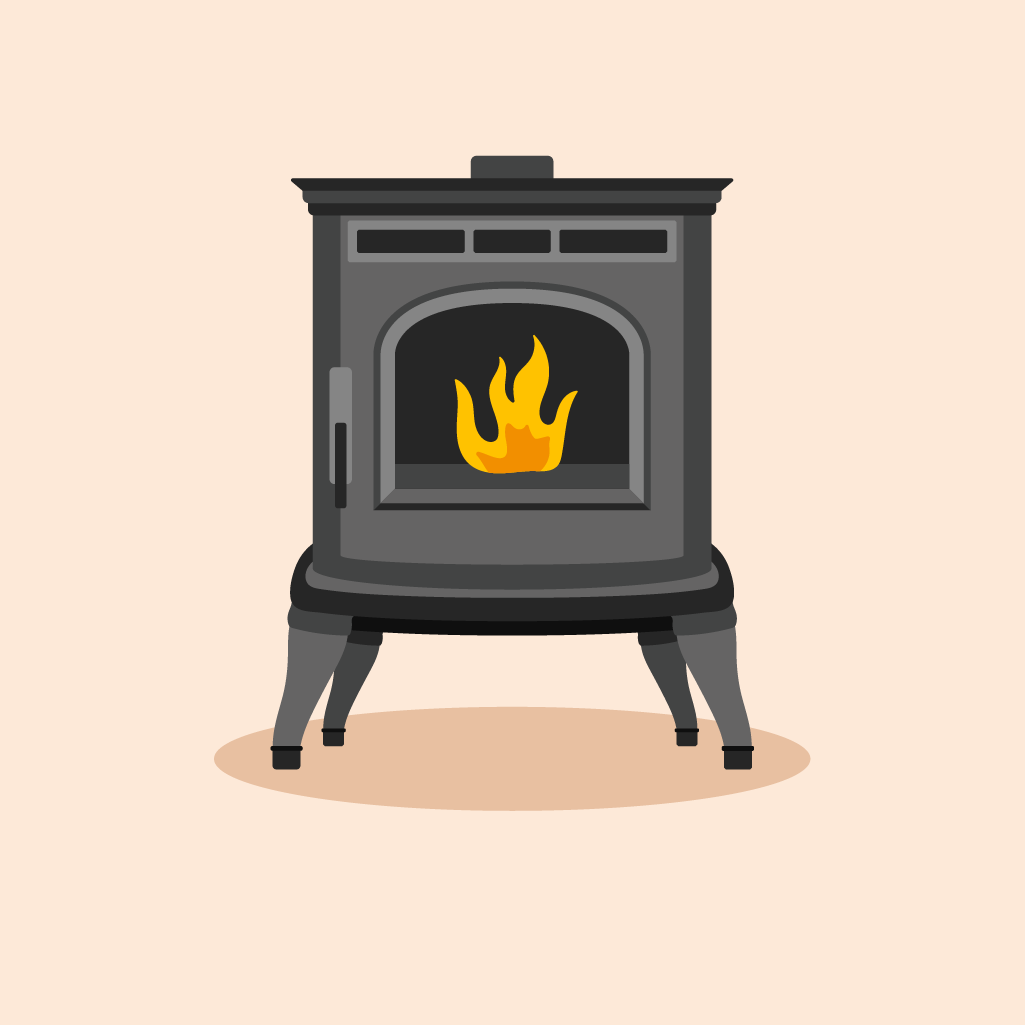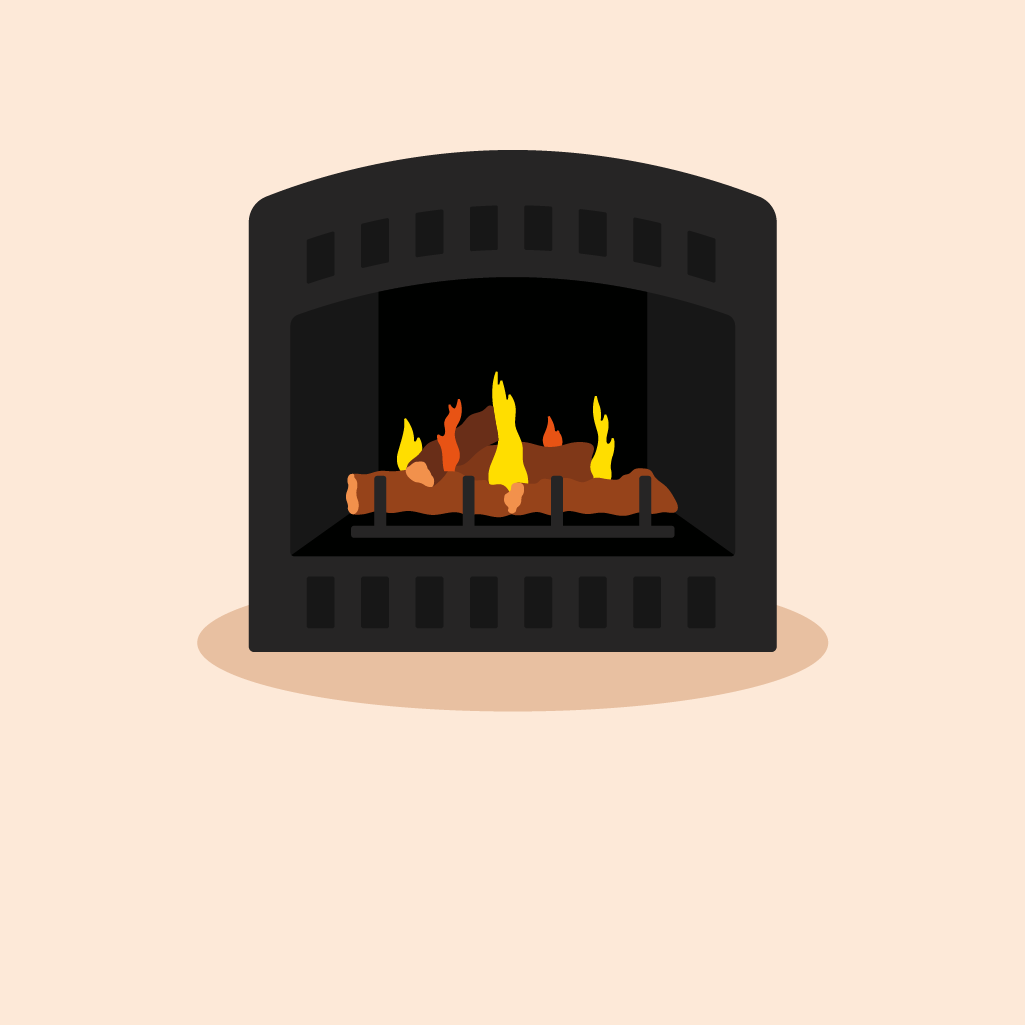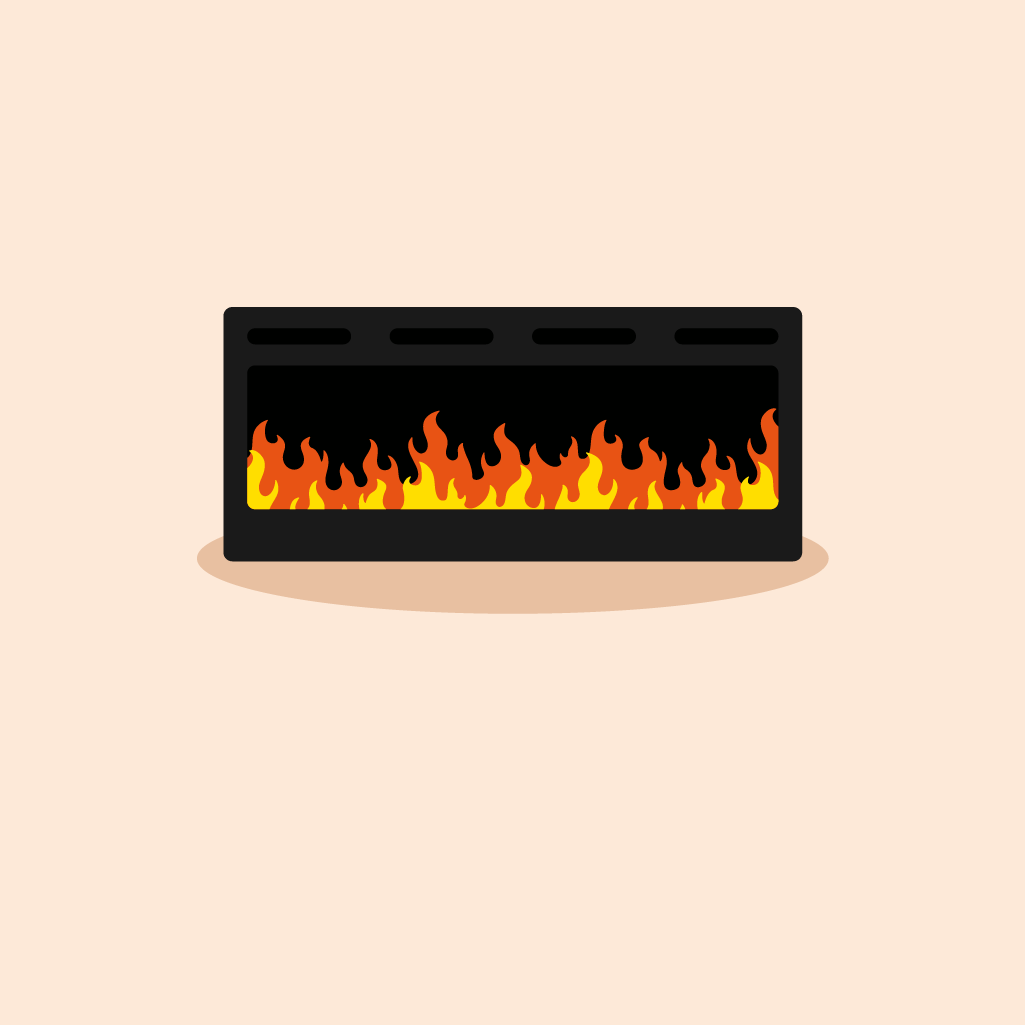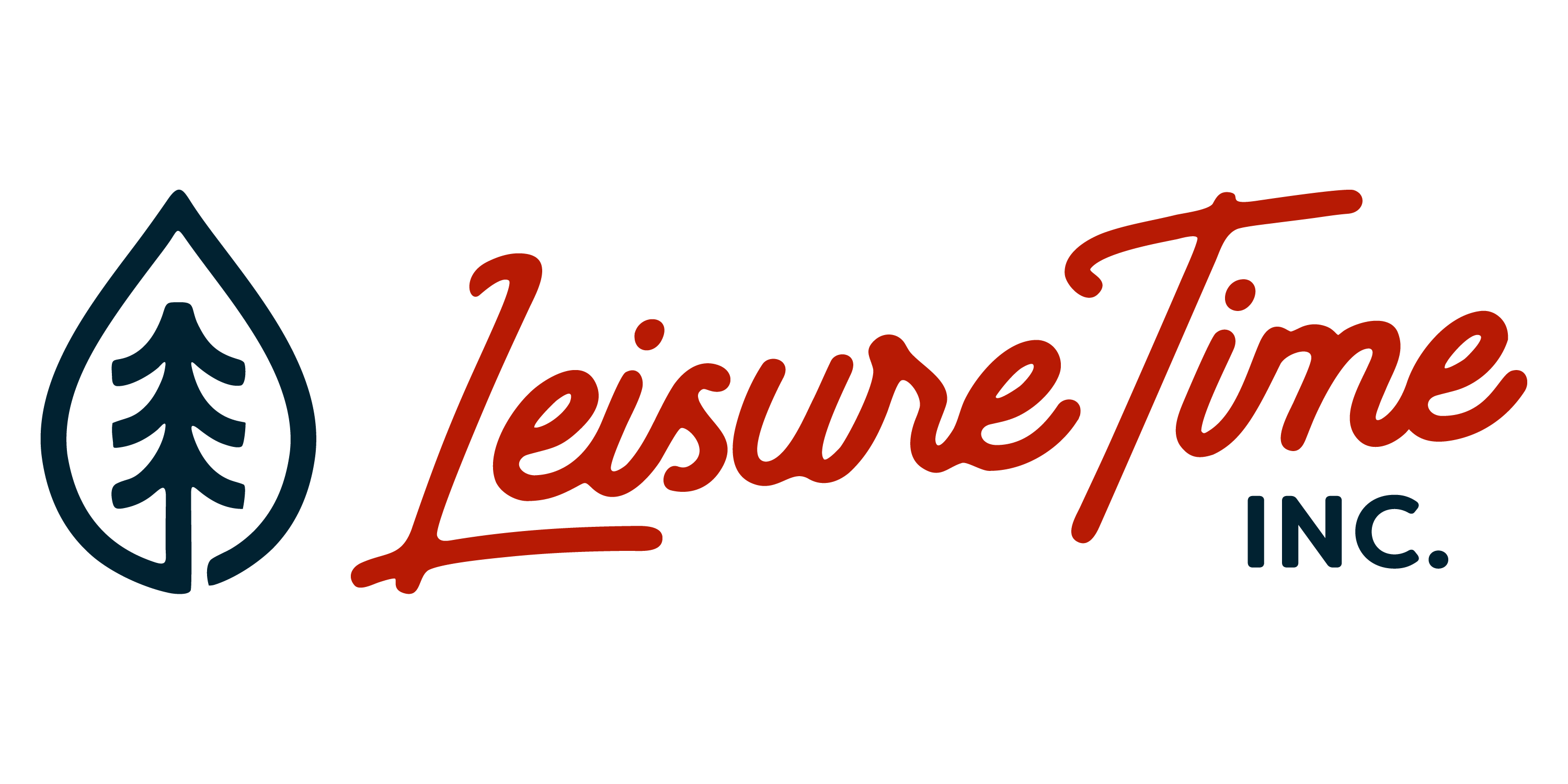Hearth Buyer's Guide
Are you considering purchasing a fireplace, insert or stove? You’ve come to the right place! We’ve put together the complete guide that answers the most common questions. We will define what a fireplace, insert and stove are. Go over their different applications and when they should be used. Then, we’ll walk you through the steps to buying a hearth product, from sizing to pre-install requirements.
Differences Between Hearth Types
Fireplace / Zero Clearance
Typically used in new construction or remodels, these fireplaces usually have:
- Metal louvers or grills, top and bottom
- Glass doors that fit inside
- Chimney exterior or chase is constructed from wood and finished with siding or other materials to match the house
- Top of chimney or chase has round metal chimney pipe or square metal cover that is visible
Insert / Masonry
Typically found in older homes, these inserts usually have:
- Faced with brick
- Opening has no metal within the opening
- Chimney exterior typically constructed of brick
- Top of chimney has square or rectangular flue tile or cap
Stove / Free-standing
Can be used in most applications, usually requires a hearth pad:
- Can see all sides of stove
- Vent pipe visible in room
- Very flexible in its venting application
Why is this important?
The venting requirements for each type of hearth product is specific, and drastically different. Not every install scenario is suited for each type of hearth product, this can become the limiting factor for which type of hearth product can be installed in your scenario.
Types of Fuel
Wood
Benefits: Natural and available. Wood is a good way to supplement the use of your furnace while helping to drive the cost of heating your home down.
Fire Characteristics: Active and robust with steady rolling flames.
Fire Starting: Paper and kindling makes for an easy start. With added features in some wood hearth products such as Automatic Combustion Control (ACC) starting is simple.
Type of Heat: Convective + Radiant. Adding more wood immediately increases convective heat while adding to a strong and steady radiant heat at the same time.
Fuel Storage & Handling: Wood does best when stored in a dry area. A cord of wood is stacked 4’x4’x8’. An average home around 1,500sqft will require somewhere between 2-4 cords a year to keep warm.
Gas
Benefits: Convenient, Clean, Simple. Quickly turn on the fire with a snap of a switch or an adjustment of a thermostat. Most hearth products also for adjustments in flame height and fire intensity.
Fire Characteristics: Consistent, decorative and controllable. With some gas hearth products, you select the media and intensity of the fire.
Fire Starting: Simple. Operate through the flip of a switch or the click of a remote. It’s very easy.
Type of Heat: Convective + Radiant.
Fuel Storage & Handling: Either through a pipeline (Natural Gas) or a tank (Liquid Propane).
Pellet / Corn
Benefits: Clean burning and consistent. Pellets are considered affordable and renewable.
Fire Characteristics: Active and robust. Fully adjustable fire, from an inch high to a powerful 10 inch.
Fire Starting: Controlled by an automatic thermostat and temperature controls. You just need to keep the hopper full of pellets.
Type of Heat: Convective. Relying on air being blown through a heat exchanger and out into your home.
Fuel Storage & Handling: Pellets normally come in bags, typically around 40lbs. A 1,500 sq. ft. home usually requires 2-4 tons per season.
Types of Heat
Convection
This type of heat is fast acting, and easily achieved. Convection heat is when you use a heat source to heat the air and distribute it. Think of a blow dryer, a blow dryer uses a fan to pull air over a superheated coil and forces it in a particular direction. A fan in your fireplace or mounted to your stove is generally how these units achieve the convection, always nice to have, they are most necessary in a home where airflow is limited and there is no other way to circulate the air.
Radiant
This type of heat is the most long lasting and is generally considered to be more desirable. Radiant heat is that comfortable, “toasty” feeling heat that we all associate with a wood stove, it is achieved by warming up items within a room, which then in turn radiate the heat into the air, which is circulating naturally. If the area in which you are looking at installing a hearth appliance has good air circulation, heating radiantly is always the ideal situation. However, I think it’s always ideal to have the option of a fan, for those extra cold winter days where it’s nice to heat the air up while waiting for the home to absorb the heat.
Terminology
Now that you can “talk the talk”, let’s move forward, and explore some of the qualifying attributes of a hearth unit, to dial in what is most appropriate for you and your home. One of the first things you’ll want to establish is whether or not you’d like this unit to be an effective heater or not. There are a few variables that are going to determine its heating ability, let’s go over them.
BTUs
AKA British Thermal Unit
The most commonly associated metric for a unit’s ability to heat. It is defined as “the amount of heat required to raise the temperature of one pound of water by one-degree Fahrenheit.”
Hearth appliances come in a variety of BTU ranges, from as little as 5,000 to 120,000 BTU’S. This unit of measure is used to determine how big of an area the hearth appliance will heat.
Questions to Ask Dealers
When talking about hearth appliances such as Fireplace, Stoves or Inserts there are many qualifying factors to consider to determine what type of appliance will work best for you.
1. What Type of Glass is Used?
Tempered
Tempered glass is “heat reflective”, or it is a poor conductor of heat. This is usually found in hearth appliances with lower BTU’S. Tempered glass has a thermal shock point (will break from too much heat) around 500 degrees Fahrenheit.
Ceramic
Ceramic glass is far and away the superior of the two, and here’s why; ceramic glass is like copper for electricity, it lets the heat flow with very little resistance. Ceramic glass’s shock point is nearly 5000 degrees Fahrenheit!
2. What Material is the Hearth Made Of?
Steel
Steel stoves heat up very quickly, cool off relatively quickly, and radiate intense heat while they are in operation. They are rugged, durable, and are the most common on the market.
Cast Iron
Cast iron stoves take a bit longer to heat up, cool off relatively slowly, and strong heat while they are in operation. These stoves typically have a more traditional, decorative look to them.
Soapstone
There are a variety of companies out there that are building stoves out of Soapstone, a stone that is very similar to granite, but has properties that allow it to hold heat effectively for long periods of time. These stoves take a bit longer to heat up, they radiate soft, comfortable heat while they are in operation, and take hours and hours to cool down after the fire has gone out. Soapstone stoves have a variety of styles and looks from contemporary, to classy traditional.
3. Your Heating Needs
Heating Area
Almost all manufacturers want to tell you exactly how much area in square footage a unit is able to heat and will advertise this metric for ease of buying. It is a very loose guideline to gauge how effective a unit will be at heating your home. Cubic footage, and air changes per hour are a much truer profile of your home, however, who knows that stuff? We always recommend to go a tad bigger than the ratings say, due to the fact that, in reality, a larger unit offers a larger spectrum of heat, and doesn’t need to be run at maximum capacity at all times.
Fans
Do you need a fan? Fans are available on almost all units.
EPA Certified
For wood hearth appliances this is crucial. An EPA Certified wood burning fireplace is really more of a wood stove that is certified to be installed into a wall. These are designed to be effective heaters, and are sealed boxes that you burn wood in. The combustion air is pulled from a dedicated duct so the pressure of the home isn’t lowered, and air that you’ve worked hard to heat isn’t burned and sent up the chimney.
4. B-Vent vs Direct Vent?
This is especially important when dealing with gas hearth products.
B-Vent Technology
This was the first generation of gas fireplaces, it is essentially the same technology as wood fireplaces operate with, an open-faced fireplace that pulls room air for combustion, and exhausts out of a vertical chimney. On some units there is the option of an outside air source to equalize pressure in the firebox and assist with the draft.
Direct Vent Technology
This is the modern standard for gas fireplaces. Direct Vent Technology is a method of venting a fireplace that involves a special type of pipe (Co-Axial), essentially this is a pipe inside of another pipe, typically a 4” pipe inside of a 7” pipe, or a 5” pipe inside of an 8” pipe. These pipes are sealed from one another and perform opposite actions. The interior pipe acts as the exhaust, and the exterior pipe acts as the intake. Almost every direct vent fireplace is a sealed box, and all of the combustion air is pulled from the outside, burned with the fire, and expelled as exhaust through the interior pipe of the chimney. There are multiple benefits to this style of fireplace venting; the fireplace is pulling air from outside to burn, rather than burning air that is already warm, keeping the warm air inside of the home, and second, since you are not burning room air, you are not lowering the pressure of the house, which means that you vastly diminish the amount of outside (cold) air infiltration into the home. These style fireplaces also have the ability to vent either horizontally or vertically, with flexibility in each scenario. Gas fireplace inserts also use this technology with their venting, although, instead of using a rigid co-axial pipe, they use two separate flexible aluminum pipes (co-linear) to vent.
Look at you! You’re becoming a pro! Now that you’ve got a pretty solid understanding of the different types of hearth units, and what they might be good for, let’s break it down a little farther and explore the different style options.
Design Elements of Hearth Products
We’ve all seen that fireplace or stove that was just absolutely jaw dropingly gorgeous, whether it was in Old Faithful Inn, in Yellowstone, or in the New York Museum of Modern Art, these units create a statement. There are many styles and designs to consider and finding the one that fits your taste just takes a bit of searching.
Whether it’s a gas fireplace or a wood fireplace, there are a few key styles that are really hot right now. Let’s jump in and look at a few of them
Traditional / Square
The traditional fireplace, this is a fireplace that is usually quite square in shape with the height dimension very similar to its width. The panels inside (called refractories) are typically made from either brick material, or stone. There is a traditional log burner on the inside, and either an arched face or a clean, craftsman style facing given to it. These units are very popular, and account for the majority of fireplaces installed today.
Contemporary / Modern / Linear / Rectangle
Modern fireplaces have grown in popularity almost exponentially in the past few years. The rectangular shape provides a sleek and contemporary look that sets a room off like nothing else. These style fireplaces become the centerpiece for the area they’re installed in and have the ability to transform a room from dull and sterile, to chic and impressive. Their media ranges from shattered glass fragments for the flame to rise out of, to modern sculptures inside of the firebox, to polygonal shapes to give a super modern feel.
Transitional
Transitional fireplaces are some of the most style flexible units out there. They can add a modern touch to a traditionally decorated room or suggest a classic feel in a contemporary design. These can be slim rectangular modern shaped fireplaces, with a traditional log set inside of them, or a square traditionally shaped fireplace with a classic log set, and a touch of crushed glass on the floor, and reflective black panels on the inside to give it a modern feel. There is such a spectrum of options here that it’s really possible to be as modern or as classic as you like.
Custom
There are some absolutely amazing people out there who are designing and engineering fireplaces. From circular gas fireplaces, to ceilings that are fireplaces, literally if you are looking for something off the wall, and specific, it can be done. Just have your pocket book ready, custom units are beautiful and one of a kind, but certainly not cheap.
Stoves
Not to be forgotten, stoves have not entirely ignored the need for design elements and style. There are a number of manufacturers out there that have developed simply beautiful freestanding stoves on both the traditional and modern front. Europe has been very progressive in the development of gorgeous modern wood stoves, and classic style stoves are getting better and better by the year. From stainless steel pellet stoves, to circular, spinning wood stoves, there’s quite a variety of styles and designs in the world of stoves.
Brands That Matter
We’ve learned about what kind of fireplaces there are, which ones are best for which situations, and what kind of styling there is available. Maybe now we know what we want, but how do we really know if it’s any good? It seems like there’s a million manufacturers out there, what’s worth buying and what’s just not worth the time of day can be tough to decipher. Let’s explore the main brands that you may encounter:
Large Brands
Quadra-Fire
Largest manufacturer of wood stoves in the world. Quality products, great warranty, good performance.
Heat N Glo
Inventor of Direct Vent technology, industry standard in gas fireplaces, great products, good performance.
Heatilator
Been in business for over 80 years, a builder’s favorite, there are more Heatilator fireplaces installed than any other brand, good warranty, acceptable performance.
Montigo
Wide range from value brand to custom, imported fireplaces, acceptable performance/product.
Vermont
Offers a product line unsurpassed in breadth, including a full array of gas, electric, pellet and wood burning fireplaces, inserts, stoves, mantels and more.
Harman
Pellet stoves that utilize an advanced Exhaust Sensing Probe system to deliver precision heating control.
Boutique Brands
Hearthstone
High quality, reasonably priced, fantastic products, great performance (Highly recommended).
Kozy Heat
High quality, reasonably priced, high end products, fantastic performance (Highly recommended).
Mendota
High end products, highly customizable, mid-high price range, great performance, great products.
Stuv
High end stoves, mid-high price range, great performance, great products.
Custom Brands
Stellar
American Made, literally will design anything you want, fantastic selection of “production style customs”, fair price, excellent product.
European
With 4 decades of experience in the heating industry, and original focus on portable heating products, European has expanded their product range into efficient gas, wood, electric and bio-ethanol stoves and fires.
Foundation
Customizable fireplaces that are stunning any way you look at them, the Foundation series also earned esteem at the International Builders Show, winning the Best Indoor Living Product category in 2019.
Disclaimer
There are many other good brands than what we've mentioned here. This is just a sampling of some of the brands that are worth exploring.
What to Expect for Costs
So now we’ve gone over just about all of the staples of the hearth shopping world, but we still haven’t talked about price! How much does this stuff cost?! Since there is such a range on each of these products, and services, we will do our best to find a fair number on what to expect:
| Entry | Mid | High | Avg Install Cost | Avg Venting Cost | Total Avg Cost | |
|---|---|---|---|---|---|---|
| Gas Stove | $1,649 | $3,029 | $3,959 | $450 | $600 | $3,929 |
| Pellet Stove | $1,999 | $2,699 | $4,239 | $500 | $400 | $3,879 |
| Wood Stove | $1,599 | $2,887 | $4,659 | $600 | $1,100 | $4,748 |
| Gas Insert | $2,585 | $3,407 | $5,041 | $450 | $400 | $4,528 |
| Pellet Insert | $2,618 | $3,183 | $3,978 | $500 | $600 | $4,360 |
| Wood Insert | $1,939 | $3,227 | $3,989 | $600 | $800 | $4,452 |
| Gas Fireplace | $1,119 | $2,839 | $5,400 | $450 | $400 | $3,969 |
| Wood Fireplace | $2,567 | $2,765 | $5,995 | $600 | $1,100 | $5,476 |
Conclusion
If you’ve made it this far, you’ve come a long way! Great job, hopefully you’ve learned some valuable information on what it takes to purchase a fireplace. An educated shopper is always going to make a better decision and be happier in the end. Now’s the fun part, check out our Project Planning to get started on getting the best fireplace or stove for your home!
Stay warm, friends!


